In the Alters’ World (and the series of books found here), creatures of legend reveal themselves to the world. Born through genetic abnormalities, defects and mutations, the Alters have lived for centuries as outcasts of human society, hiding their true nature from the world while colorful stories have been written by many to describe what they’ve seen. How are these creatures different from what was described in the stories? What relationship do they have with humanity? Every entry of the Alterpedia will delve into a new creature from around the world. This week we cover:
Arachne
Around the world there are creatures which are universally known by humanity to symbolize conflicting emotions. It is no mistake that in each of these regions you find mythology which, in turn, connects to these creatures. For instance, snakes are a common symbol across many human civilizations – from the Naga of India to the Grootslang of Southern Africa. In similar fashion, spiders are a symbol of both fear and creation the world over.
In Japan they are known by the names Tsuchigumo and Jorōgumo, in Africa there is the famous trickster Anansi, and in Greece there was the story of Arachne. But regardless of the location, the primary trait remains the same: these are creatures which appear to be a hybrid of humans and spiders. The stories change depending on the relationship the locals have with the spiders in their area, but many of the aspects remain the same.
So are these creatures really just giant spiders, lurking in the shadows and tormenting the humans around them? Was Anansi really a profound trickster or just a misunderstood soul? Am I valid in contemplating burning the whole planet to purge these people from the world?
Probably not the last one, but for the rest, let’s take a look…
Appearance
Mythology
The depictions of these creatures tends to vary depending on the culture they’re dealing with. Each is inspired particularly by the way other creatures in the same mythology tend to be depicted. For instance, in cultures where many animal-human hybrids are shape-shifters, typically the Arachne variant will do the same.
Japan’s Jorōgumo and Tsuchigumo are known to be able to change forms from a completely human looking entity to that of a giant spider-like creatures. In the Tsuchigumo’s case, this form features multiple arms and legs attached to a striped body and the head of a demon. This figure is hidden from view for the majority of time, allowing the Tsuchigumo to lure people into their traps and bring them into rooms full of webs which can be used to snare them. In one story, involving Minamoto no Yorimitsu, the Tsuchigumo even appeared as an army of strange figures before eventually having its true form revealed.
Another common depiction of these creatures is with the form of a centaur-like spider creature with the upper body of a human attached to the thorax of a spider. These images are especially common in more modern day re-tellings and particularly in modern artwork unattached to the stories but attempting to show the creatures of legend. Among the ones shown to be this way are the previously mentioned Jorōgumo and the article’s namesake, Arachne.
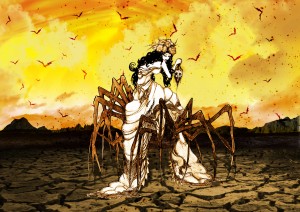
However, in the case of Arachne and a few other legendary figures, the spider-like form is normally depicted as complete. Rather than being a spider-human hybrid or a shape-shifter, they tend to be either true spiders with human-like traits such as intelligence or… in the case of one of the more famous depictions of Arachne, a human body warped to the point of becoming more spider-like than human.
One outlier among these depictions is that of Anansi. While he’s just a spider, it is clear that he has human-like intelligence, and some modern depictions show him as being a human-like creature with spider-like features. This version is rare and common only in the modern day, as the original tended to be drawn more as an abstract of a traditional spider’s form.
Alters
However, among the Alters, the form of a human with multiple limbs is accurate. The Arachne race and all of its subraces are a severe form of chimerism spurned by the activation of the Alter A-Type cell.
In traditional human chimeras, the act of two fetuses fusing into a single body causes the resulting person to be composed of two conflicting sets of DNA. This results in abnormalities such as irregular skin patches, conflicting blood types, or immune system issues as the two sides identify each other as invasive.
In the case of the Arachne, this conflict is addressed, the body reorganizing the conflicting mass into isolated patches before encouraging completed growth. To put it simply, Arachne grow additional limbs that once would have belonged to the siblings they absorbed in the womb. The number of limbs at any given time is always limited to 8 due to a variety of mental and physiological factors, with at least 4 arms and possibly up to 6.
The skin patches are also common, and generally organized in a fashion that is reminiscent of more spider coloration. Arachne have a limited form of body modification ability, similar to that of the First Ones, which allows them to be able to organize their skin discolorations into colorful patterns like a natural tattoo. One of the most common of these “tattoos” is the appearance of additional “eyes” on their face.
Aside from this, other traits adopted in these color adaptations can be markings from famous species of spiders such as the infamous hourglass of a black widow or the bright colors of more tropical species. These markings are not meant as a threat or warning, but rather a cultural tradition used by the people of the race to cope with their unnatural condition by “owning” it.
Abilities
Mythology
Spider-like creatures have been attributed with many talents over the centuries depending, once again, on their country of origin. On the African continent, entities such as Anansi and Neith were known to have divine attributes which made them responsible for profound acts. Anansi, a trickster spirit, is generally credited for the (accidental) distribution of wisdom throughout the world. Meanwhile, Neith, associated with the spider but not depicted as one under most circumstances, was particularly known for being a weaver of fate and destiny. This was a trait she later shared with Athena, who is central to the story of Arachne the weaver.
This attribute of being connected to destiny is quite common even in the far east. While the Japanese demons sharing spider-traits feature many more abilities than their western counterparts, they are also commonly known for being able to manipulate others and their destinies in the same fashion. Often, threads of webbing could be used to control or manipulate other people or objects, such as when Tsuchigumo was able to split into many forms and be able to control all of them at once. Meanwhile, the Jorōgumo has been known to save people from drowning, interfering in what would have been an untimely death while also being known to bring a swift end to others. In both cases, a clear connection to the forces of life and death are known.
Besides this connection to fate, many spider-like creatures, like the song says, do “whatever a spider can”. Despite their usual massive size, it is very common for these creatures to be depicted crawling along surfaces in the same way their smaller counterparts would. This is particularly true of the giant webs they are almost universally known to create.
Weaving webs is a particularly common ability, especially among those creatures tied to destiny or divine intervention. According to the story of Arachne, the original spiders descend from a woman who was such a great weaver that she could compete even with the goddess Athena. Strangely, despite their aforementioned size, these spider creatures seem to be quite dependent on their webs for what they will do. While many of them will have a powerful venom, their hunting abilities almost always depend on their ability to create traps, illusions, and trickery with this skill. This is particularly ironic in the case of the Tsuchigumo, as that creature is most closely associated with the Chinese bird spider – a type of Tarantula rather than a trap-based spider.
This goes to show that the majority of this mythology is actually based more on general knowledge and opinion of the Order Araneae rather than any specific spider species.
Alters
Unlike their mythological counterparts, the Alter race of Arachne are unable to do “whatever a spider can”. Lacking any actual divine power, the Arachne are also unable to manipulate the fates of others. However, the traits most unusual to them are the ones most important in relation to their mythological counterparts – namely their venom and webs.
Due to their chimeric physiology adapting to be able to assimilate and utilize seemingly foreign mass, the Arachne have a very special control over their biochemistry that allows them to create materials from their body which would be impossible for a normal human. Their venom is a particularly potent mix of toxins that the Arachne has been exposed to over the course of their lifetime that has been absorbed, assimilated, and then reproduced at will by the individual. Similarly, a spider-silk like material can be created through trial and error through a very long process of selective gland modification derived from ancient rituals performed by the First Ones. With this ability to control their biochemistry, it is theorized that an Arachne can create almost any chemical compound within their body provided the appropriate ingredients. This even includes compounds normally dangerous to organic matter, as their internal organs can adapt to resist anything they may produce.
This ability, combined with their fantastic ability to multi-task due to extra hands, has made Arachne particularly skilled in textiles. Their ability to operate looms and other tools required for the production of fabrics and clothing combined with their ability to create synthetic fibers has given them an edge in the field within the Alter community. In ancient times one of the more common products of the Arachne enclaves was a specially synthesized and woven material known as Arachnos Cloth, an ancient precursor to modern-day ballistics protection which went down in legend as items such as the Aegis of ancient Greece, which was particularly known for it’s fantastic craftsmanship and to this day is used as a word to describe a protective charm.

Another source of the myth connecting them to protection, fate and control over life and death lies in the use of their chemical manipulation ability to become effectively immune to most poisons, illnesses, and external stimuli. Arachne are effectively immortal and can adapt to almost anything that may be used to try to kill them. After centuries of encounters, the only known effective means of killing an Arachne are severe bodily trauma and fire.
Behavior
Mythology
The chief behavioral trait of spider-based creatures in mythology is that they are often tricksters in nature. Those that are predatory are often trying to lure people or animals into their traps to be devoured, promising them something enticing or feigning innocence while hiding sinister schemes. Even Anansi, a fairly benign creature and often folk-hero, is a trickster by nature – always trying to find a way to con others into giving him what he wants.
Beyond their deceptive nature, the stories often root back to a conflicted relationship with spiders. They are viewed as protective charms in regions such as the middle east and north Africa, but are also known to be venomous and dangerous in other regions. Even within the stories of a single region you’ll find them to have a mercurial nature of helpful or dangerous from one story to the next.
When they are hostile, they are almost universally man-eaters, generally constructing giant webs for the purposes of killing travelers. These webs will often be masked or hidden to allow people to wander into them unknowingly. Often this version of the spider creature is so prevalent that in modern tales they’ve become a staple of the likes of video-games and fantasy novels as the giant terrifying creature which is about to devour you slowly in a cocoon of webbing.
When not hostile, their nature is often far more subtle. They’re reclusive, not wanting to be in direct contact with humanity without some sort of protection from them such as a disguise or the cover of darkness. They wish to be left alone more often than not and even when they do not wish to be alone they’ll make a point to hole away in a lair, dedicating themselves to a single location. The Jorōgumo is known to anchor to one location so much that the location even shares a similar name, the Jōren Falls, where she is known as the mistress of the falls.
Regardless, it is clear that they are always just outside of human civilization, best left alone to their own devices or allowed to do what they please.
Alters
In contrast, the Arachne people are incredibly beneficial to society and have made a point to be useful throughout history. Their reclusive nature is quite true, many Arachne prefer to remain hidden from their surrounding area for fear that the human population would turn against them. But they are frequently known to volunteer their services to assisting the progress of civilization.
Their craftsmanship is of particular note, with many advancements in textiles and synthetic fabrics being slowly leaked to human civilization from the shadowy reaches of Arachne enclaves. It is believed by Alter communities that many polymers used for artificial fabrics in the 20th century were actually created by Arachne who then allowed humans to take the credit in their place to avoid any major attention. If true, this would suggest that modern ballistic armor is, more than simply similar to, a direct evolution of legendary protective garb spoken of in ancient mythology.
As another development of modern times, Arachne are slowly becoming more comfortable with using their talents in biochemistry to work on advancements in pharmaceuticals. Given the nature of some “accidental” discoveries in medicine, several Alter scholars have attributed many antibiotics (traditionally toxins formulated or discovered to impact microscopic infections more than the host) to the experiments of Arachne that did not wish to come forward.
Because of their reclusive nature, however, it is quite difficult to be able to identify what they have and have not actually contributed to society. Unlike the more boastful Elves and Dwarves, even after the revelation of Alters to the public, few Arachne are willing to come forward to take credit for their work in the modern day.
In fact, many Arachne are quite happy with the idea that their race may continue to be considered purely a work of fantasy, seeing the mythology and the various plays based around it as a method of providing “plausible deniability”. It is in this behavior that we see where the illusions in mythology may have their root. As, if they are to hide behind the cloak of theatricality to hide their existence…
It’s clear they’re willing to accept any representation over exposure.
(If you like the Alterpedia and the world that inspires them, support it by picking up my books. Thankfully, Arachne haven’t appeared in them…yet. Yes, I’m an arachnophobe)


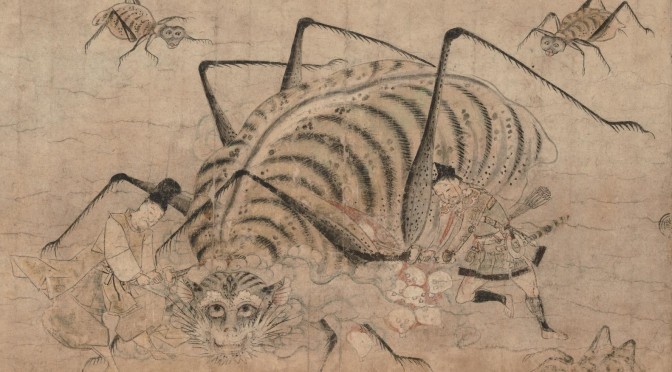

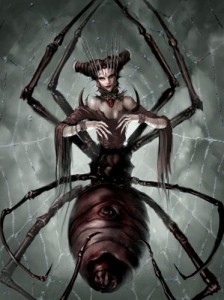

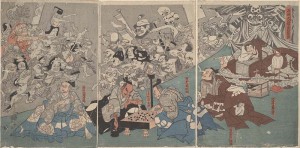
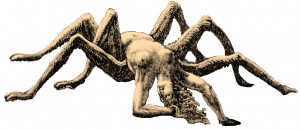
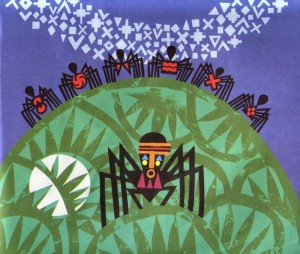
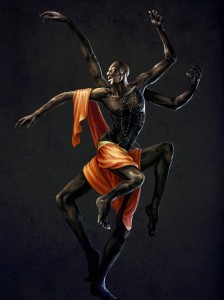





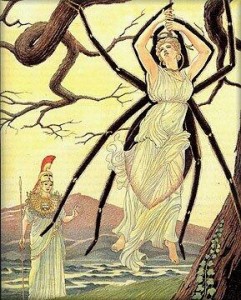
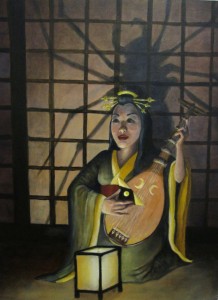
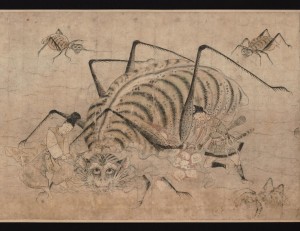
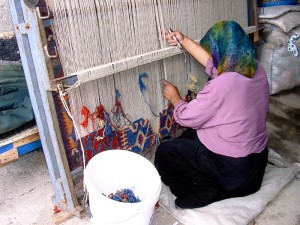

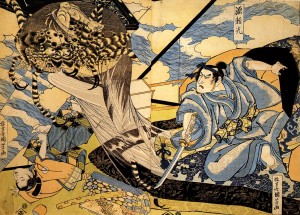
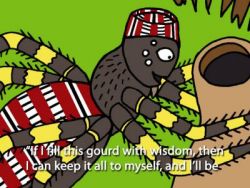








Any relation between Alter Arachne and the multi-limbed dieties of Hindu Mythology? The Asura and Deva’s, etc?
The Arachne are a particularly ancient breed of Alter (nearly contemporary with the first ones) which are a common ancestor to multiple varieties – including the Asura and Naga of the Indian subcontinent. In Europe their family lines also evolved into modern shape-shifters and their descendent races, effectively making them the missing link for many races around the world.